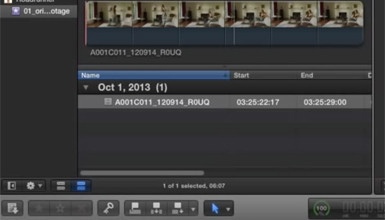log-c
Tutorials & Guides
We've discussed many of the advantages of shooting Log C on the ALEXA before, but often one of the biggest roadblocks is the preconceived notion of an overly complex workflow. While this can be true if you need to grade the majority of your footage, often times (especially if you nail your exposure), a simple translation is all that is necessary.
Tutorials & Guides
Working with Log material can be difficult at times, so we have put out a couple of different LUTs for use when using the Sony F3's S-Log or Canon Log from the Canon C300. You can download the F3 LUTs and the C300 LUTs, as many of you have already done. Arri has their online LUT Generator, and the Technicolor CineStyle LUTs are available when using the CineStyle profile on the 5D Mark II.
Tutorials & Guides
With every new camera, comes many new questions about workflow. The term 'workflow' can be fairly broad, but today I am looking at importing C300 footage into various non-linear editing systems (NLE). The C300 uses the same workflow as the Canon XF series of cameras (which includes the XF305, XF300, XF105 and XF100), because it records in the same format. However, the tools for importing the footage have been updated by Canon. Below, I outline how to ingest footage onto a hard drive, and how to import into Avid Media Composer, Final Cut Pro 7, Premiere 5.5 and Final Cut Pro X. Keep reading for a brief how-to on each process.
Tutorials & Guides
When Arri released the SUP 4.0 firmware for the ALEXA, they also added the ability to create color 'Looks' to load into the camera. These Look files are similar to scene files found in other cameras, but they aren't burned into the Log C recording of the camera. Instead, they can be used in post by converting them to LUTs using Arri's LUT Generator. These looks then travel as metadata with the clips recorded (through the XML file). Look files can be created by saving a still from the camera and loading it into the Arri Look Creator, which can then modify the still and output a look.
Tutorials & Guides
A few weeks ago, Jesse Rosen wrote an article explaining the technical definition of LOG-encoded video and how it differs from a viewing gamma such as REC709. To better understand how you might use LOG capture in production, I shot this video illustrating the differences.
Tutorials & Guides
Our eyes perceive brightness differently than an electronic sensor does. Video monitors are locked into a standard for color and contrast, but now Digital Cinema camera systems are being used to capture images that are used and displayed in media that can see well beyond those limitations.




















